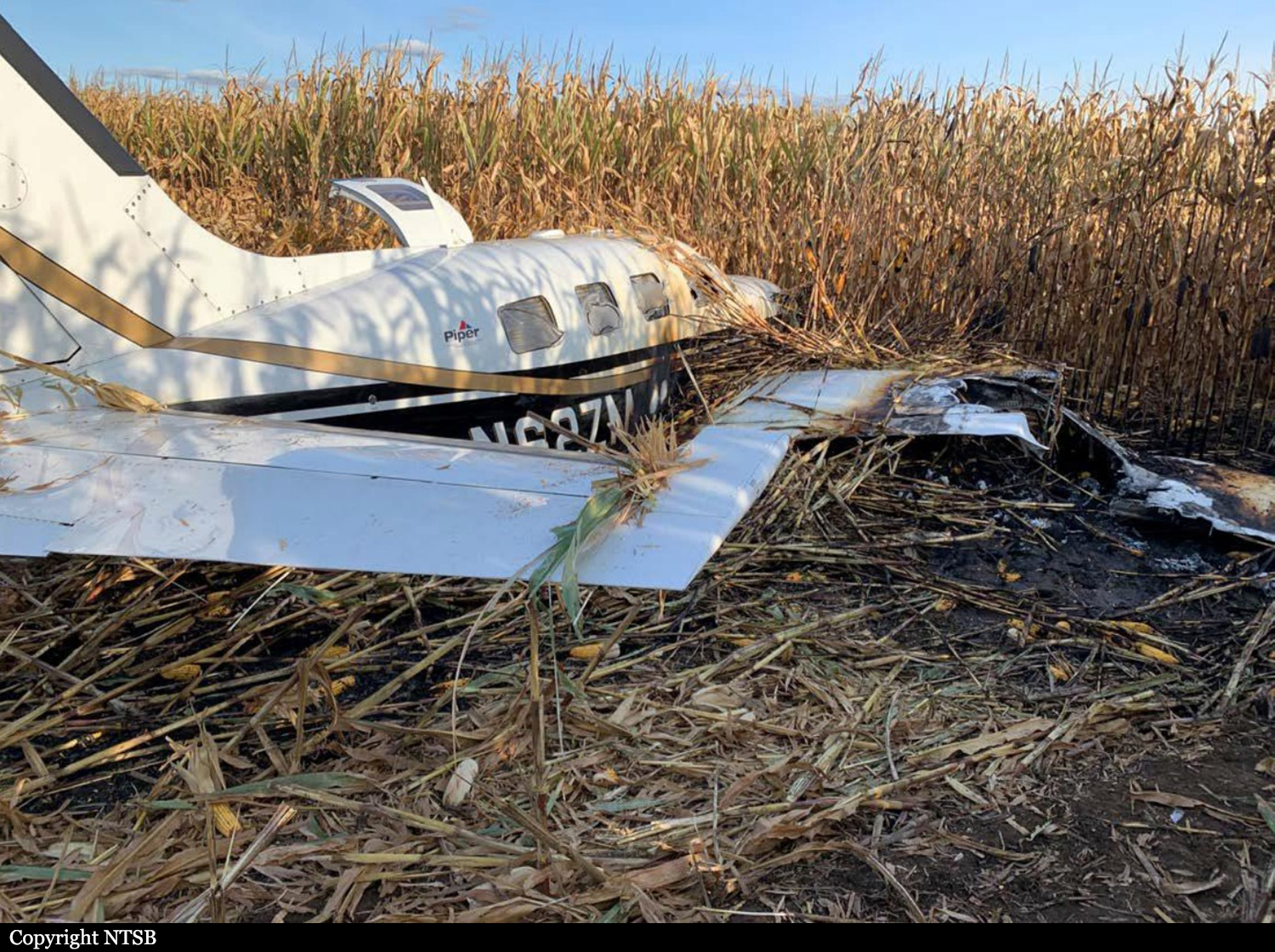Crash of a Piper PA-46-500TP Malibu Meridian in Lake Elmo
Date & Time:
Oct 2, 2020 at 1512 LT
Registration:
N62ZM
Survivors:
Yes
Schedule:
Lake Elmo - Mesquite
MSN:
46-97087
YOM:
2001
Crew on board:
1
Crew fatalities:
Pax on board:
1
Pax fatalities:
Other fatalities:
Total fatalities:
0
Captain / Total hours on type:
42.00
Aircraft flight hours:
2850
Circumstances:
On October 2, 2020, about 1512 central daylight time (CDT), a Piper PA-46-500TP, N62ZM, was substantially damaged when it was involved in an accident near Lake Elmo, Minnesota. The airline transport pilot sustained serious injuries. The airplane was operated as a Title 14 Code of Federal Regulations (CFR) Part 91 personal flight. The pilot reported that shortly after takeoff from runway 32 at the Lake Elmo airport (21D) and following landing gear retraction, he noticed a “hiccup” in the engine power and immediately started a turn back towards the airport. During the turn, all engine power was lost and the pilot executed a forced landing into a field of standing corn. The airplane impacted the terrain, bounced, and came to rest upright in the corn about ½ mile northwest of the departure end of runway 32. The airplane sustained substantial damage to the right wing as a result of the impact and post-crash fire. The airplane was equipped with a Pratt & Whitney PT6A turboprop engine.
Probable cause:
A total loss of engine power for reasons that could not be determined.
Final Report:





